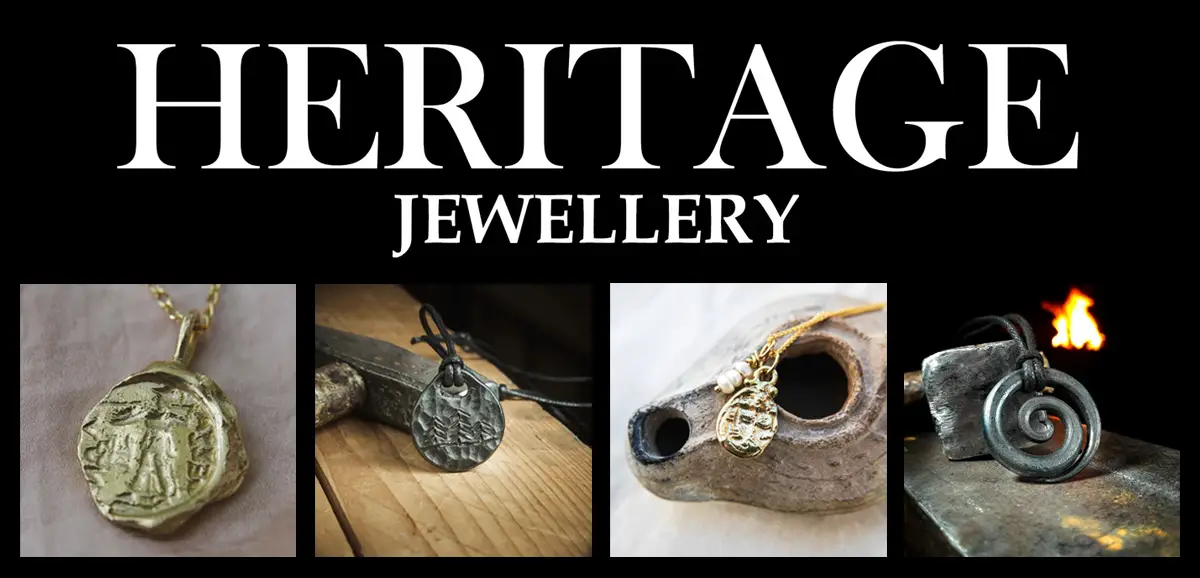1 : Stonehenge
Stonehenge is a prehistoric monument in Wiltshire, England, about 2 miles (3.2 km) west of Amesbury and 8 miles (13 km) north of Salisbury. One of the most famous sites in the world, Stonehenge is the remains of a ring of standing stones set within earthworks. It is in the middle of the most dense complex of Neolithic and Bronze Age monuments in England, including several hundred burial mounds.
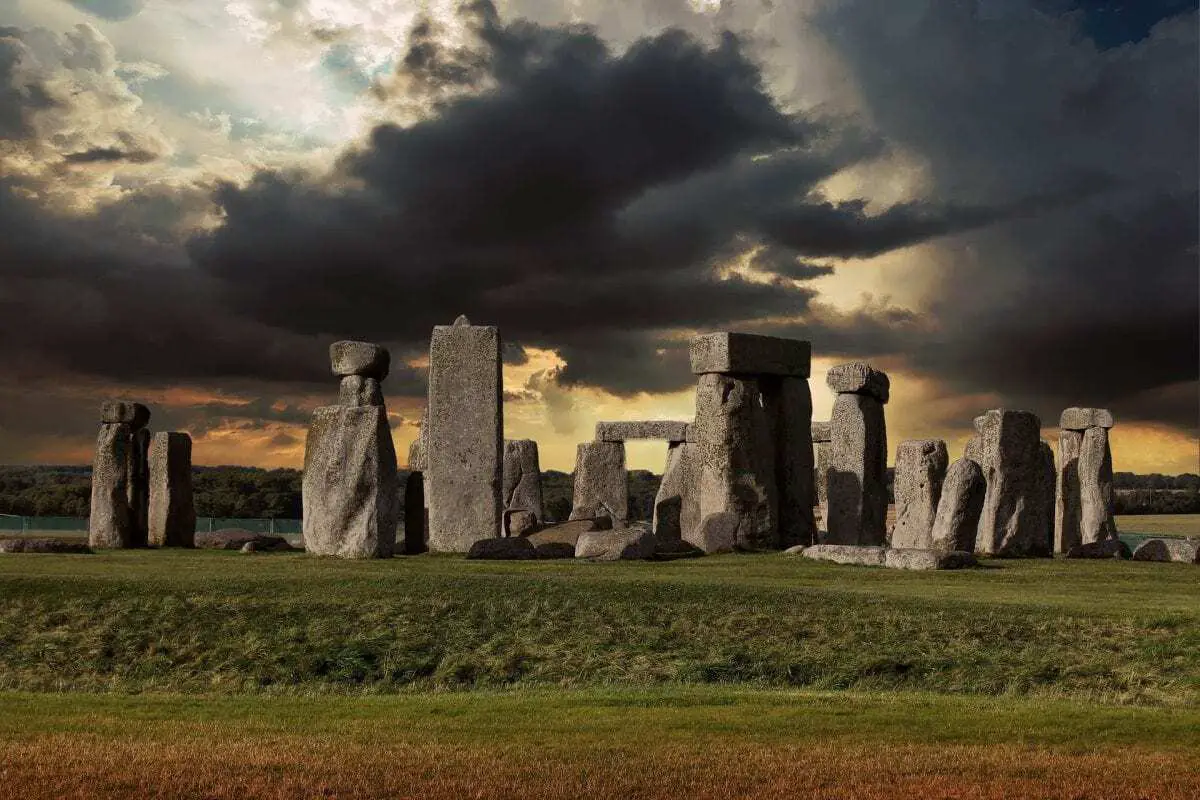
Archaeologists believe it was built anywhere from 3000 BC to 2000 BC. Radiocarbon dating in 2008 suggested that the first stones were raised between 2400 and 2200 BC, whilst another theory suggests that bluestones may have been raised at the site as early as 3000 BC.
The surrounding circular earth bank and ditch, which constitute the earliest phase of the monument, have been dated to about 3100 BC. The site and its surroundings were added to the UNESCO’s list of World Heritage Sites in 1986 in a co-listing with Avebury Henge. It is a national legally protected Scheduled Ancient Monument. Stonehenge is owned bythe Crown and managed by English Heritage, while the surrounding land is owned by the National Trust.
2 : Avebury
Avebury is a Neolithic henge monument containing three stone circles, around the village of Avebury in Wiltshire, in southwest England. Unique amongst megalithic monuments, Avebury contains the largest stone circle in Europe, and is one of the best known prehistoric sites in Britain.
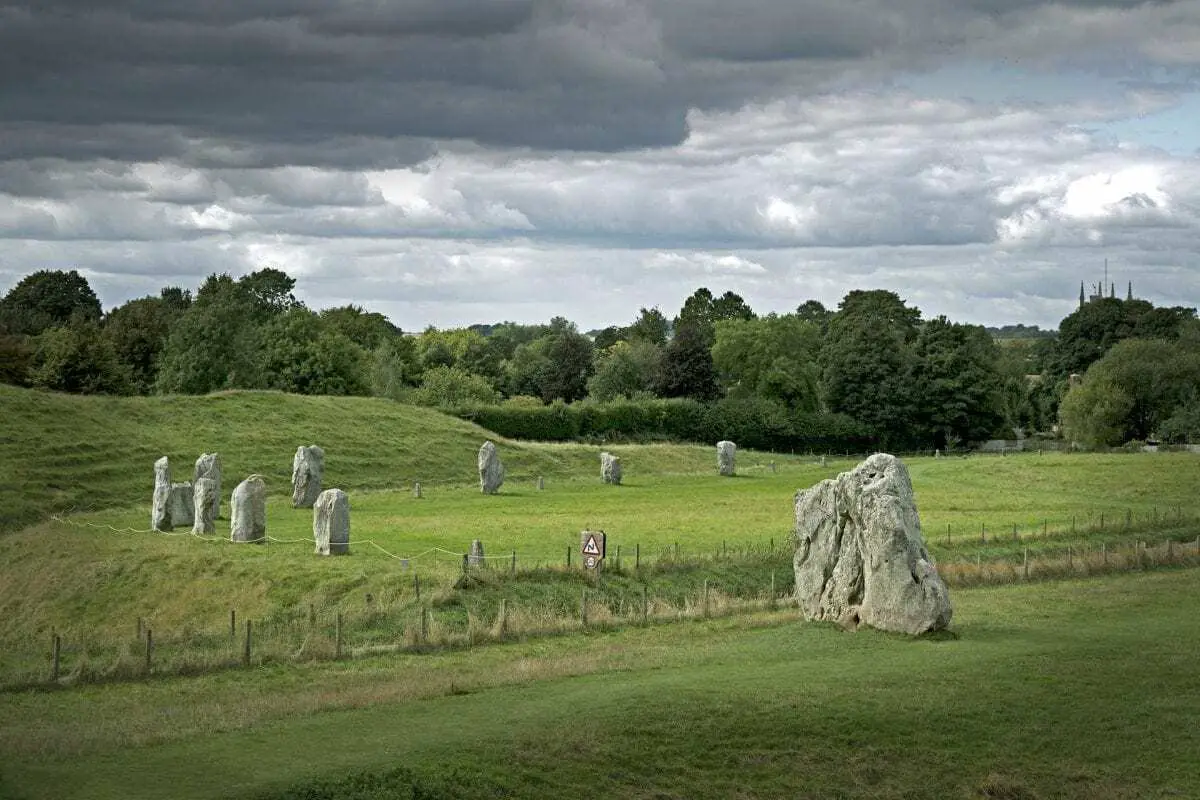
Constructed around 2600 BC, during the Neolithic, or ‘New Stone Age’, the monument comprises a large henge with a large outer stone circle and two separate smaller stone circles situated inside the centre of the monument. The Avebury monument was a part of a larger prehistoric landscape containing several older monuments nearby, including West Kennet Long Barrow and Silbury Hill.
3 : The Ring of Brodgar
The Ring of Brodgar is a Neolithic henge and stone circle in Orkney, Scotland. The ring of stones stands on a small isthmus between the lochs of Stenness and Harray.
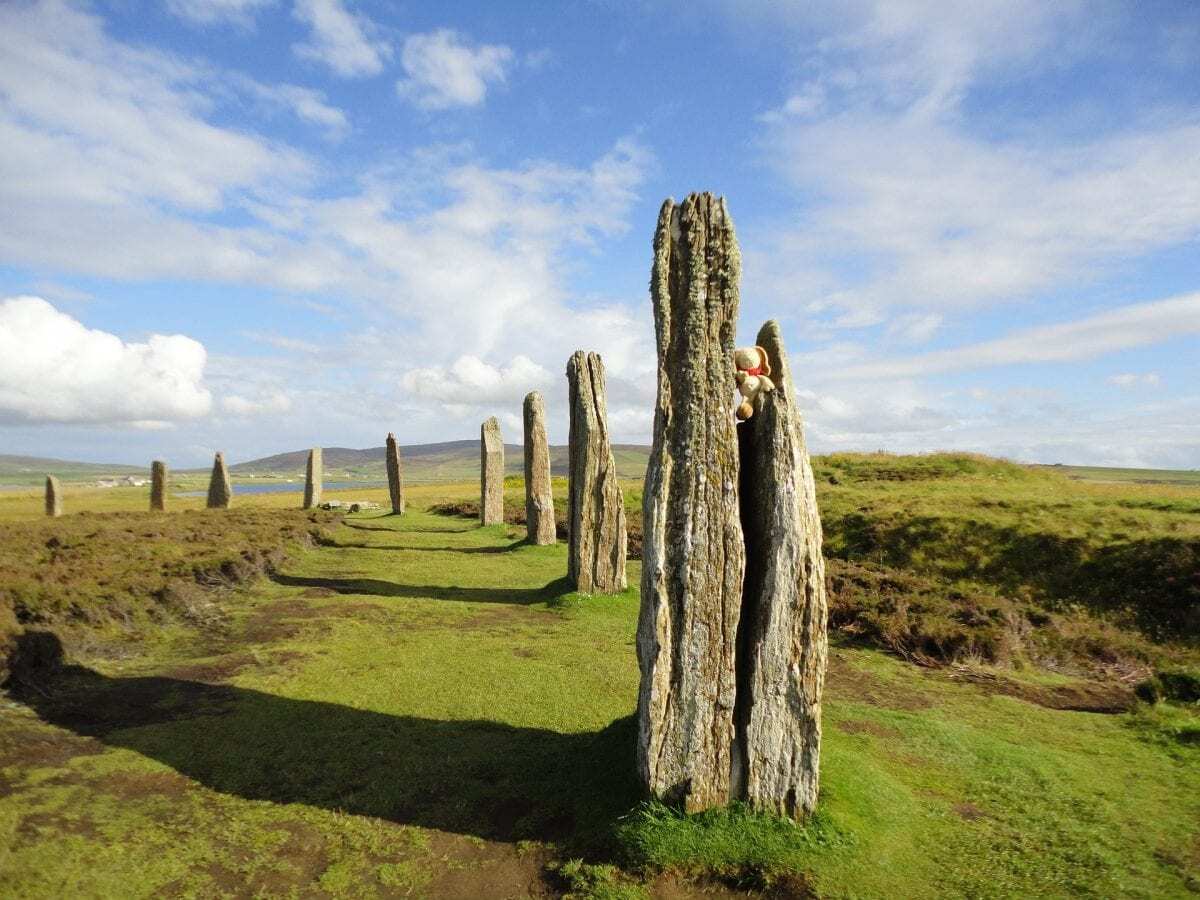
Unlike similar structures such as Avebury, there are no obvious stones inside the circle, but since the interior of the circle has never been excavated by archaeologists, the possibility remains that wooden structures, for example, may be present. It is generally thought to have been erected between 2500 BC and 2000 BC, and was, therefore, the last of the great Neolithic monuments built on the Ness.
4 : The Callanish Stones
The Callanish Stones, are situated near the village of Callanish on the west coast of Lewis in the Outer Hebrides (Western Isles of Scotland). Construction of the site took place between 2900 and 2600 BC, though there were possibly earlier buildings before 3000 BC.
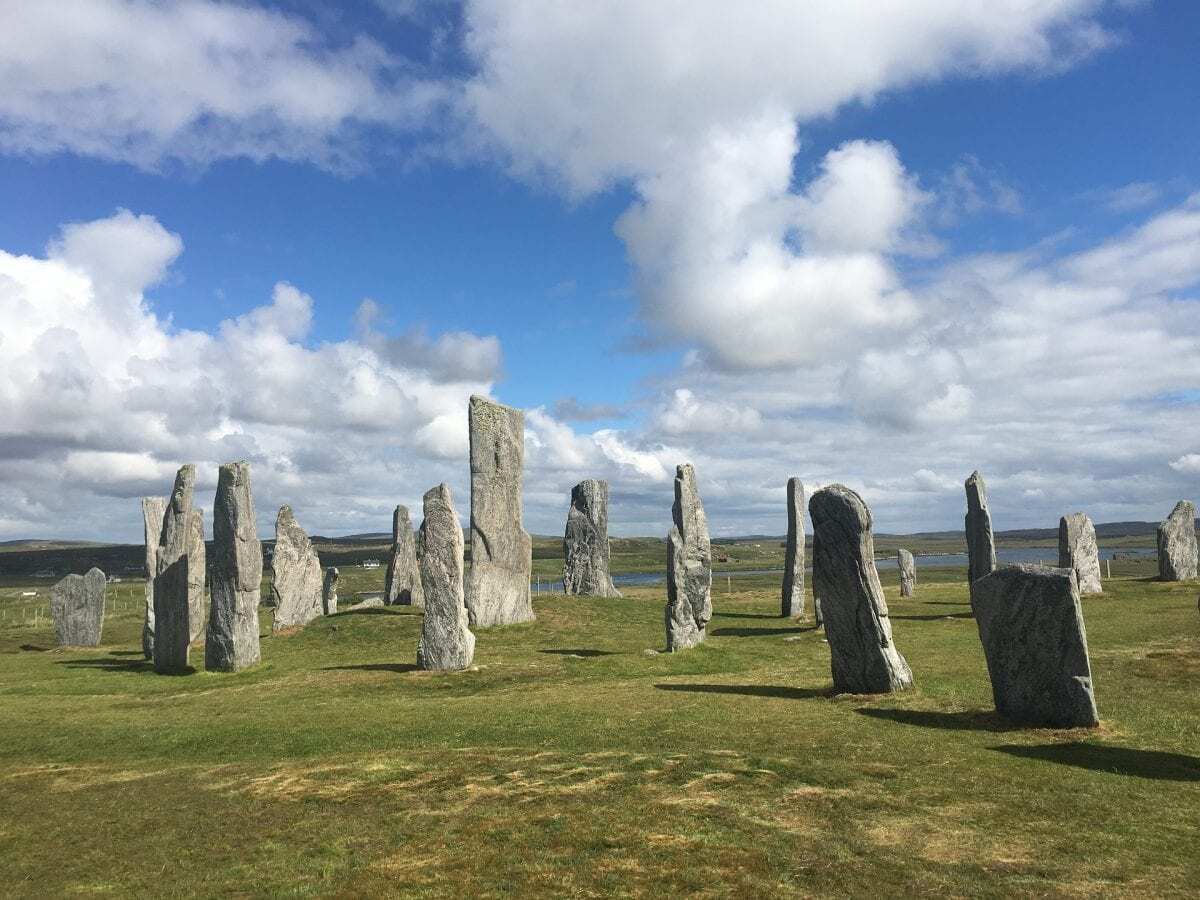
The tallest of the stones marks the entrance to a burial cairn where human remains have been discovered. An excavation campaign in 1980 and 1981 showed that the burial chamber was a late addition to the site, and that it had been modified a number of times. Pottery finds suggested a date of 2200 BC for the erection of the circle.
5 : Castlerigg Stone Circle
The stone circle at Castlerigg is situated near Keswick in Cumbria, North West England. One of around 1,300 stone circles in the British Isles and Brittany, it was constructed as a part of a megalithic tradition that lasted from 3,300 to 900 BC, during the Late Neolithic and Early Bronze Ages.
Various archaeologists have commented positively on the beauty and romance of the Castlerigg ring and its natural environment. Current thinking has linked Castlerigg with the Neolithic Langdale axe industry in the nearby Langdale fells, with the circle acting as a meeting place where these axes were traded or exchanged.
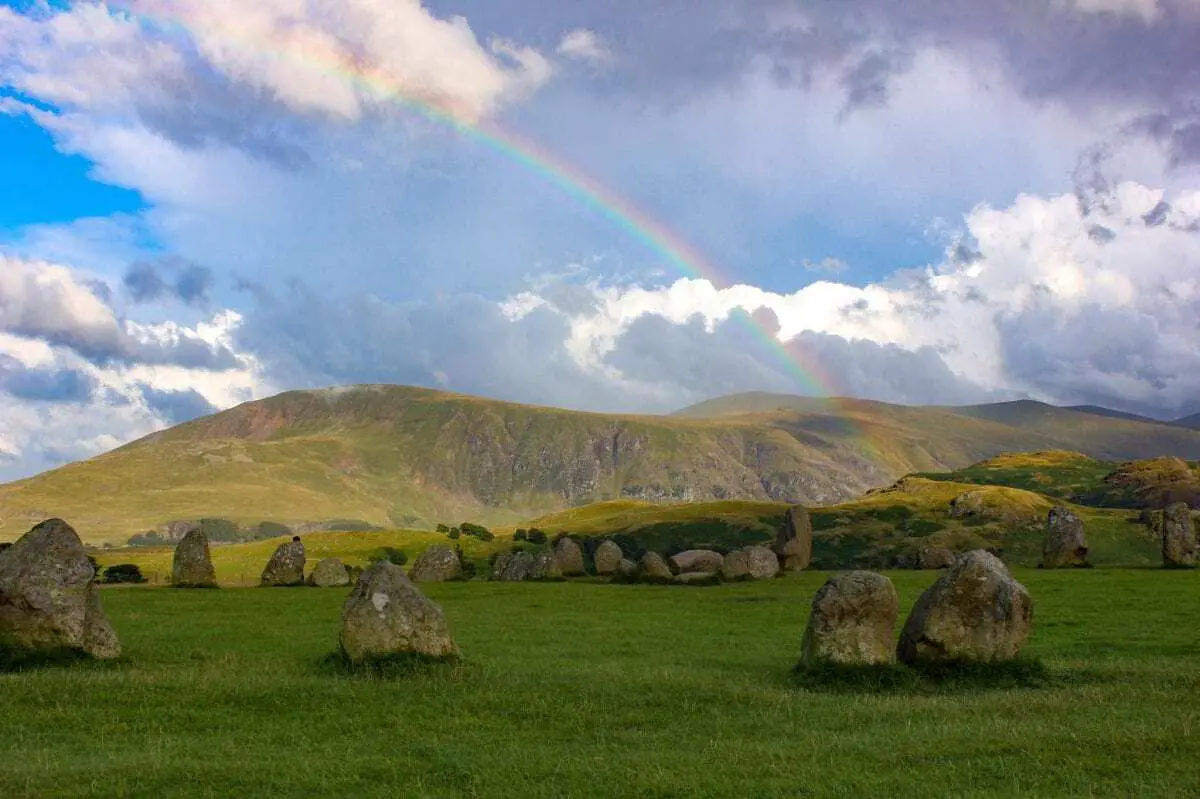
Ritually deposited stone axes are frequently found all over Britain, suggesting that their use went far beyond their mundane practical capabilities. Because of this, any exchange or trading of stone axes may not have been possible without first taking part in a ritual or ceremony. Castlerigg stone circle could have been the space in which these rituals and ceremonies were enacted.
6 : Boscawen-Un
Boscawen-Un is in southwest Cornwall in the Penwith district north of St Buryan by the road from Penzance to Land’s End. The stone circle consists of a central standing stone encircled by 19 other stones, including 18 made of grey granite and one of bright quartz.
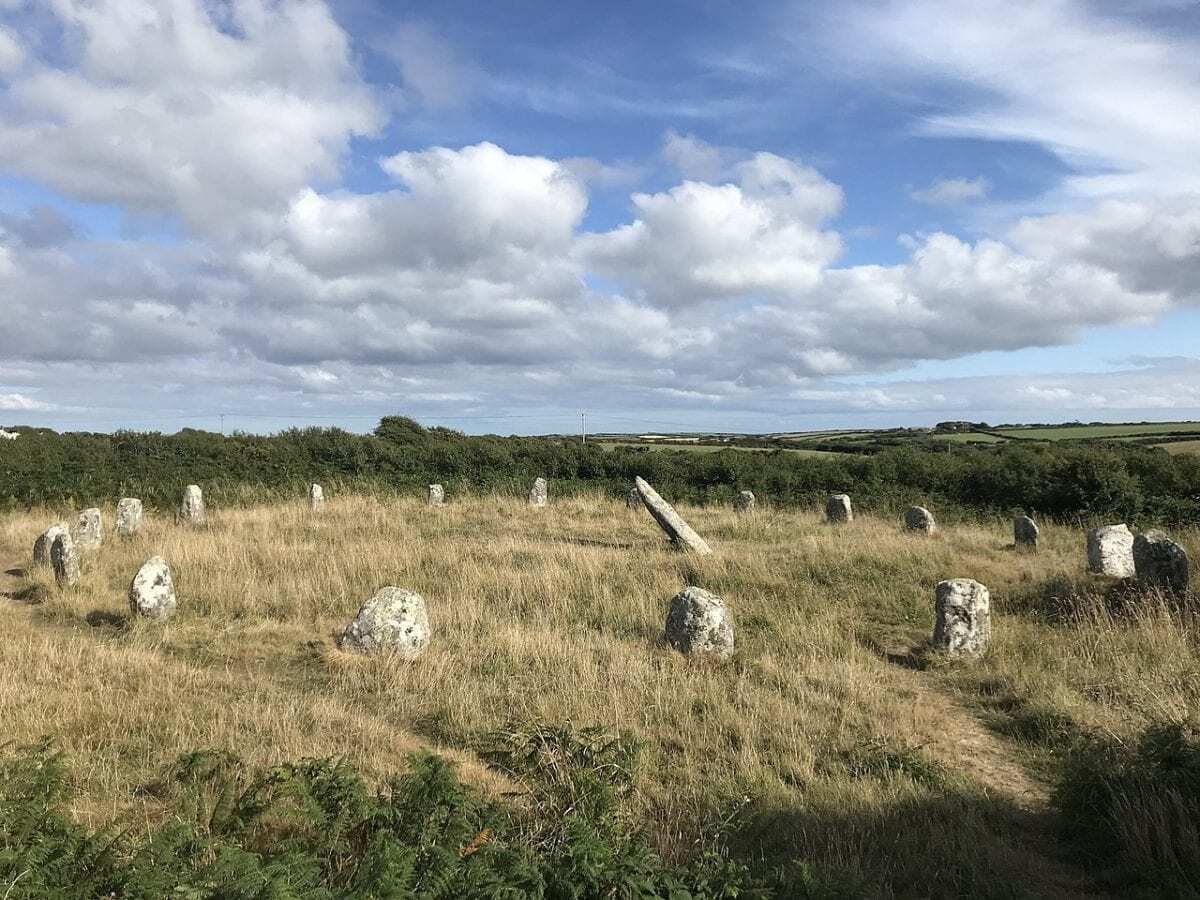
In 1864 the area around the stone circle was first studied by archaeologists. The excavation report shows that the central stone already had its remarkable inclination. A burial mound was discovered near the stone circle, in which urns were located.
7 : Rollright Stones
The Rollright Stones are a complex of three Neolithic and Bronze Age megalithic monuments located near to the village of Long Compton on the borders of Oxfordshire and Warwickshire in the English Midlands.
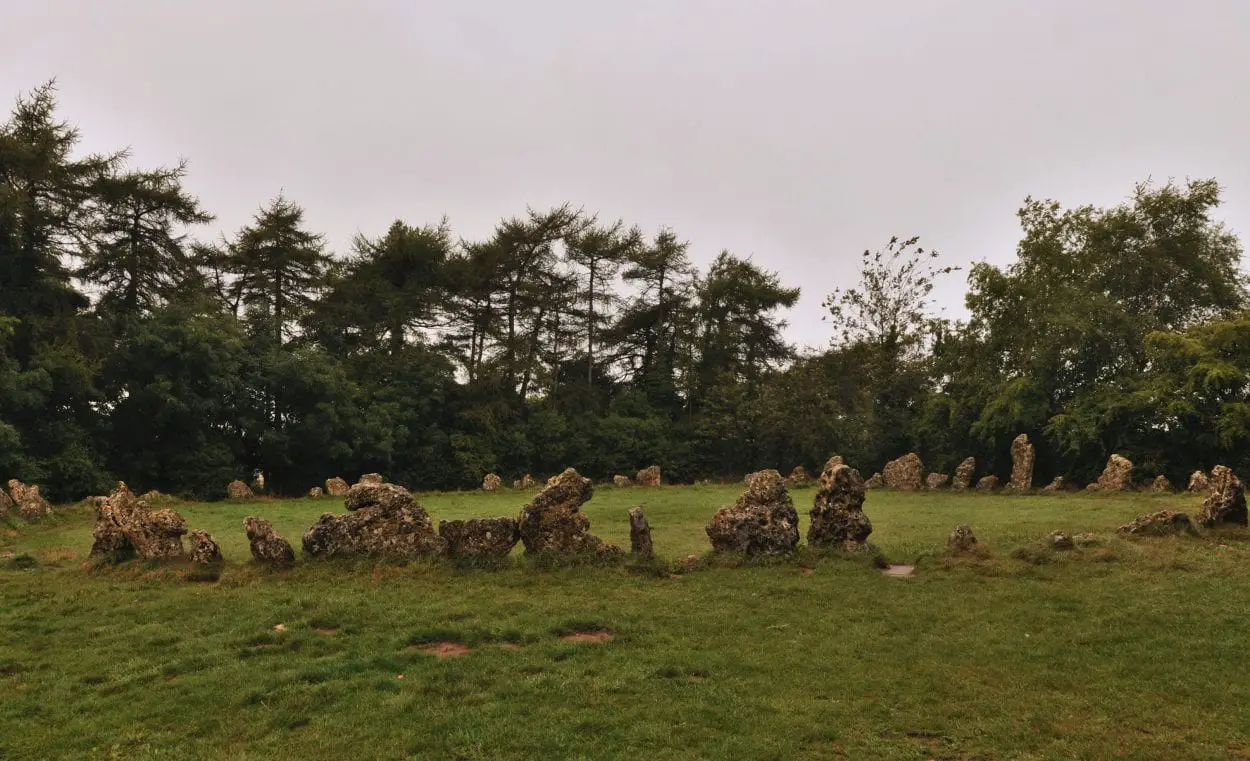
Constructed from local oolitic limestone, the three separate monuments, now known as The King’s Men, The King Stone and The Whispering Knights, are each distinct in their design and purpose, and were each built at different periods in late prehistory from the 4th to the 2nd millennium BC.
8 : Mitchell’s Fold
Mitchell’s Fold (sometimes called Medgel’s Fold or Madges Pinfold) is a Bronze Age stone circle in South-West Shropshire. The name of the circle may derive from ‘micel’ or ‘mycel’, Old English for ‘big’, referring to the size of this large circle.
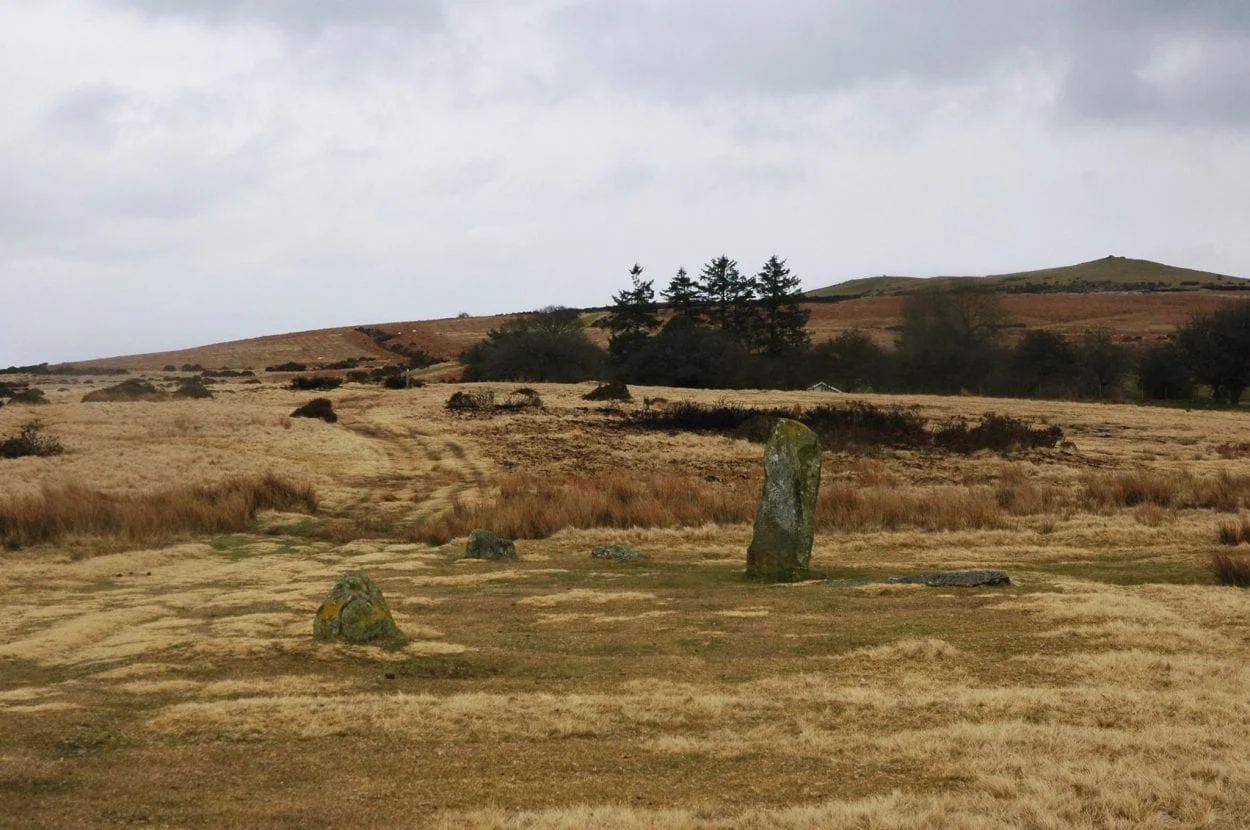
Its doleritic stones came from nearby Stapeley Hill. Many of them are now missing and others are fallen. In the beginning, there may have been some thirty stone pillars with the remaining that still stand range in height from 10ins to 6 ft 3 in (1.91 m).
9 : The Hurlers (stone circles)
The Hurlers is a group of three stone circles in Cornwall, England. The site is half-a-mile (0.8 km) west of the village of Minions on the eastern flank of Bodmin Moor, and approximately four miles (6 km) north of Liskeard.
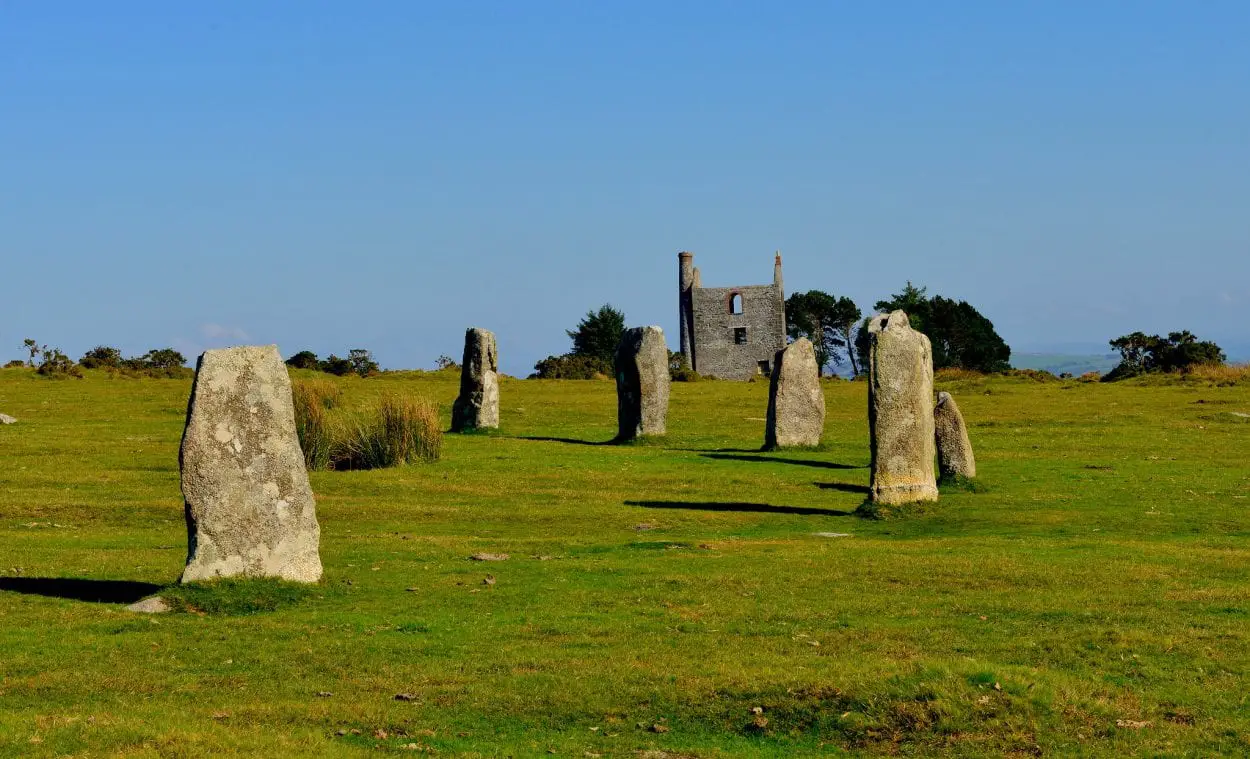
The Hurlers comprises three stone circles that lie on a line from SSW to NNE, and have diameters of 35 metres (115 ft), 42 metres (138 ft) and 33 metres (108 ft). The two outer stone circles are circular, whilst the middle circle is slightly elliptical.
10 : Tregeseal East stone circle
Tregeseal East is a heavily restored prehistoric stone circle around one mile northeast of the town of St Just in Cornwall, England, United Kingdom. The nineteen granite stones are also known as “The Dancing Stones”. It is the one surviving circle of three that once stood aligned along an east-west axis on the hillside to the south of Carn Kenidjack.
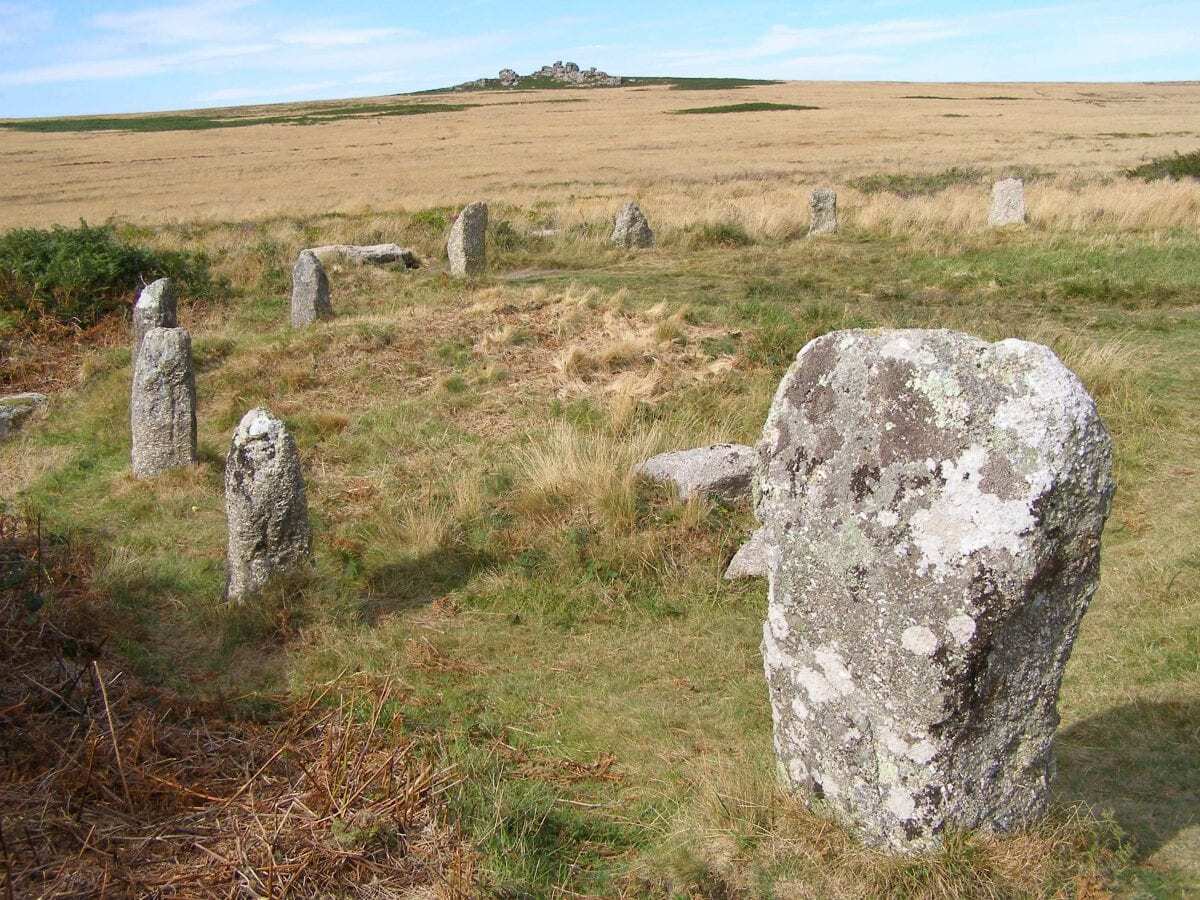
The stone circle consists of 19 granite blocks with a height between 1.0–1.4 m (3 ft 3 in–4 ft 7 in), which describe an approximate circle with a diameter of around 21 m (69 ft).
Header Image – Public Domain


